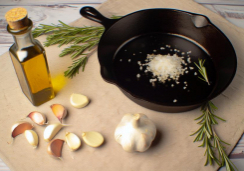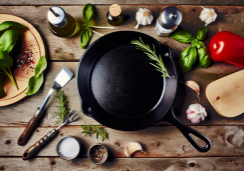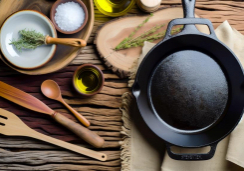3 Best Stir-Fry Tips for Healthy Beginners
Chop swiftly, heat thoroughly, and combine vigorously: these are the pillars of a masterful stir-fry that you're about to embrace in your kitchen.
As you embark on this culinary adventure, remember that the secrets to a healthy and flavorful stir-fry lie not just in the fresh ingredients you choose, but in the simple techniques you apply.
You'll want to get your pan sizzling hot to lock in those flavors, understand the nuances of preparing your proteins and vegetables for even cooking, and learn to harmonize the diverse tastes for that perfect bite.
Keep these pointers in mind, and you'll be well on your way to crafting stir-fries that are as nourishing as they are delectable.
Stay tuned to uncover how these foundational tips will elevate your dishes from mundane to magnificent, all while keeping health at the forefront of each meal.
Optimize Your Heat Management
To achieve the perfect sear on your stir-fry, it's crucial to start with your wok or pan sizzling hot, ensuring your ingredients sizzle the moment they hit the surface. This initial burst of high heat locks in flavors and textures, turning ordinary ingredients into a delectable feast.
Make sure your heat management is on point. Begin by selecting an oil with a high smoke point to withstand the intense heat without burning, allowing you to cook quickly and efficiently. As you toss and turn your colorful veggies and succulent proteins, the quick cooking time is essential to preserve their crunch and tenderness.
Remember, overcrowding the pan is a cardinal sin in stir-frying. It drops the temperature dramatically and causes your ingredients to stew rather than sear. To avoid this, cook in batches. This technique ensures each morsel gets enough attention and space to bask in the glory of the medium-high heat.
And don't forget to give your wok or pan time to cook and recover its temperature between batches. Consistent high heat is the secret to achieving that coveted stir-fry char. Adjusting from high heat to medium-high heat judiciously lets you master the heat, rather than letting the heat master your stir-fry.
Master Ingredient Prep
Once you've mastered the art of heat control, it's essential to focus on prepping your ingredients, as a well-organized kitchen is the backbone of a successful stir-fry. Begin by slicing your meat and vegetables into uniform, thin strips, which not only cook quickly but also create an attractive dish. As you add fresh pops of color with green beans or peppers, remember that the prep work you do now pays off in flavor and ease later.
Marinate your meat in a blend of soy sauce and wine to deepen the flavor profile before stir-frying. With a small amount of oil heated in your wok or skillet, cook the meat first. Once it's done, remove the meat and set it aside. This allows you to cook your vegetables to the perfect crisp-tenderness without overcooking the meat.
Remember to pre-cook denser vegetables like broccoli or carrots to match the cooking times of quicker-cooking ingredients. Have your stir-fry sauce and fresh herbs measured and ready to toss in, ensuring all ingredients together meld into a harmonious and mouthwatering meal. With everything prepped and at your fingertips, you're set to stir-fry with skill and confidence.
Can I Use These Stir-Fry Tips for Healthier Cooking Methods?
Yes, you can definitely use these healthier stir-fry cooking techniques to make your meals more nutritious and delicious. By using less oil, incorporating more vegetables, and choosing lean protein sources, you can enjoy all the flavors of stir-fry without the guilt. Try these tips for a healthier cooking method.
Balance Flavors Mindfully
As you embark on your stir-fry journey, mindfully balancing flavors is key to creating a dish that dances on the palate, blending sweet, salty, sour, and savory notes into a delightful symphony.
To make a delicious stir-fry, start by considering each ingredient. When you cook meat, it brings a savory depth, which can be enhanced by a splash of soy sauce for saltiness. But don't stop there—add a hint of sugar to introduce a touch of sweetness, and a dash of vinegar provides a subtle sour kick that brightens the overall taste.
As you stir and toss your ingredients in the wok, engage in different cooking phases. Initially, focus on building the foundation flavors: brown your meat for umami, then introduce aromatics like ginger and garlic.
As the cooking progresses, keep tasting and adjusting. If your sauce needs to thicken, a cornstarch slurry can work wonders without altering the taste.
Conclusion
Now you're equipped to sizzle up a storm! Crank that heat high, prep your meat for tenderness, and time those veggies just right.
Remember, your wok is the canvas, your ingredients the paint. Sear in the flavors, and don't forget to play with seasonings for that perfect balance.
Dive in, stir-fry rookie, and turn fresh, simple ingredients into vibrant, mouth-watering meals that'll impress your taste buds and boost your kitchen confidence!










